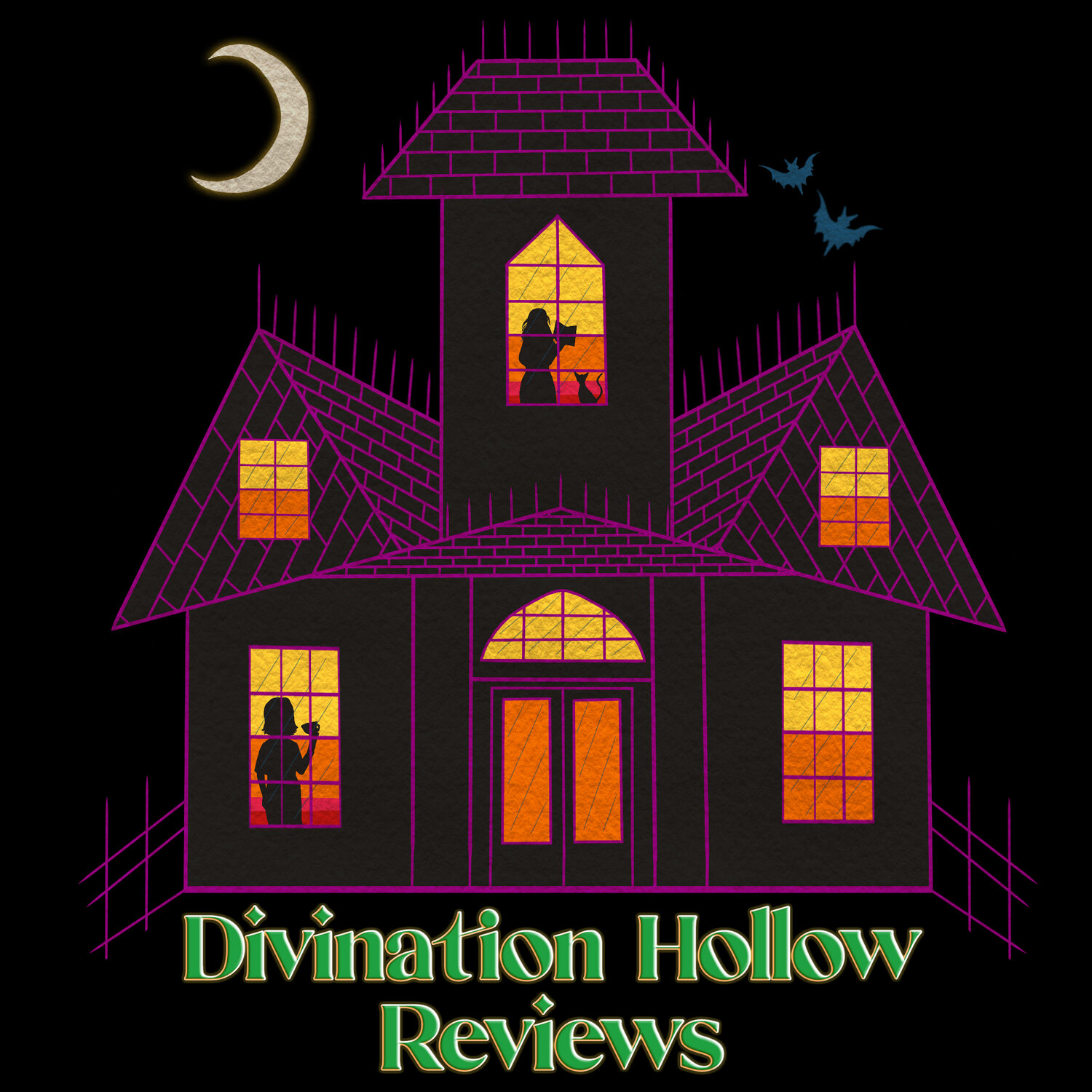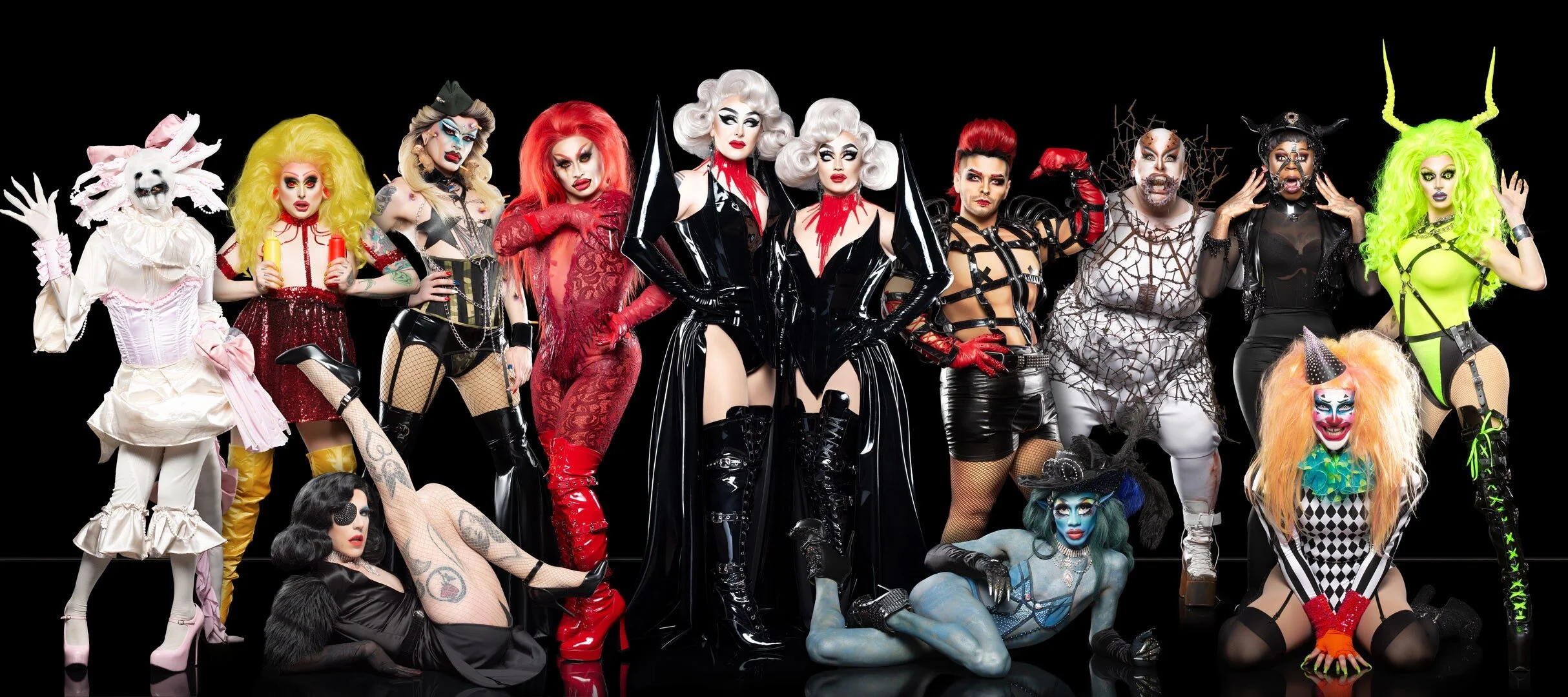Drag Queen Horror
If you’re curious about the intersection of drag and horror, you’ve come to the right place. Over the years, the two have not paired off as much as some of us might like—at least, not unless the pairing springs from comedy. But now a richer world of drag horror has appeared. The humor hasn’t necessarily been bled from it completely, but the horror element has a more prominent role. Let’s take a look at some of this drag horror, both past and present.
Dragula
While RuPaul’s Drag Race has featured several challenges over the years inspired by horror, the Boulet Brothers unleashed their horror-focused competition Dragula in 2016. Loosely based on their club event of the same name, drag artists compete each season for the chance to win a cash prize and the crown of “Dragula - the World’s Next Drag Supermonster.” The brothers have also launched a podcast, Creatures of the Night, that features movie reviews, celebrity interviews, and famous hauntings.
I Like to Watch Horror
In this YouTube show under the umbrella of the Netflix Film Club, Trixie Mattel and Katya react to scenes from classic horror movies like The Witches, Scream, and The Evil Dead. As you can imagine, the commentary is hilarious.
Film, Stage, and Television
Speaking of Katya, The Quiet Room by Sam Wineman (2018) features two Drag Race contestants: Alaska Thunderfuck (in drag as a supernatural demon named Hattie) and Katya (out of drag as a nurse). Although only a short film, it attempts to go beyond the narrow confines of our expectations about drag and is straight-ahead horror.
Movies have long portrayed cross-dressing characters as homicidal murderers, at least as far back as Psycho (1960, Alfred Hitchcock) and its imitator Homicidal (1961, William Castle). Camp began to change this, however, making inroads in mainstream culture during the androgynous 70s. The Rocky Horror Show debuted on London’s West End in 1973. Two years later, this campy tribute to sci-fi and horror B-movies found cult status with the release of the film version, The Rocky Horror Picture Show. Tim Curry, who originated the iconic role of transvestite Frank-N-Furter on stage, gave the movie much of its pizzazz.
More camp followed. I remember attending a drag version of Carrie in San Francisco during the 90s, where the audience was invited to toss tampons at poor Carrie White during the shower scene. Drag actor/writer Charles Busch produced several satirical films and plays, starting with Vampire Lesbians of Sodom (Broadway, 1984). His movies include Psycho Beach Party (2000) and Die Mommy Die (2003).
More recently, Killer Unicorn (2019) concerns a party boy whose drag queen and queer friends help save his life, but not without deadly consequences. In Death Drop Gorgeous (2020), a dejected bartender and an aging drag queen try to survive as a masked maniac slaughters gay men and drag queens and drains them of blood. Both films continue in the campy/comic vein.
It’s harder to find non-comic uses of drag like The Quiet Room. The television series American Horror Story, created by gay writer/producer Ryan Murphy, has featured two drag characters. In Hotel (season 5, 2015), Denis O’Hare portrayed a cross-dressing bartender. The following year, Roanoke (season 6, 2016) featured Trixie Mattel in one episode as a panel moderator.
Music
Drag influenced the development of heavy metal and goth. Whether it was Twisted Sister during the 80s, Marilyn Manson during the 90s, or the Frankenstein Drag Queens at the cusp of the millennium, horror drag, rock, and punk occasionally joined hands. Sharon Needles, winner of Drag Race Season 4, has released several albums with songs like “This Club Is a Haunted House,” “Dracula,” “Jack-O-Lantern,” and “W*ndigo.” Her melding of punk attitude with electronic club music makes this drag entertainer the preeminent representative of horror drag in music.
Other artists sometimes dip into the horror drag category. Yvie Oddly’s music video “Drag Trap” offers a subversive look and lyrics to match. Todrick Hall and Bob the Drag Queen collaborated on the music video “Wrong Bitch,” inspired by the Wicked Witch of the West. The song formed part of Hall’s wonderfully clever, gay retelling of the Wizard of Oz story in Straight Outta Oz. And Lil Nas X stoked controversy this year with his music video “Montero (Call Me by Your Name).”
Drag Horror Personalities
We have to begin by mentioning Elvira, who started hosting late night horror B-movies on television in 1981. Despite her resemblance to Vampira, who hosted a Los Angeles TV variety show in 1954-55, Elvira found much wider notoriety with her sexy vampire look and campy humor. Yes, she’s a real woman (Cassandra Peterson), but that doesn’t mean she’s not a drag queen. In fact, that’s how she describes herself.
What distinguishes horror drag from mere costuming? I don’t have the definitive answer, but here’s my take on it. First of all, the persona will probably be female, which may involve some version of a dress and/or wig. Secondly, the face makeup will probably be rooted in traditional makeup for women, albeit taken to the extreme: eye shadow, lipstick, blush, mascara, etc. Most importantly, the finished look will feature something out of a nightmare. We are now blessed with a bevy of Instagrammers who post lovely, monstrous creations, including drag artists Charity Kase, Opulence Black, and Yovska. Not all of them focus exclusively on horror, but it plays a significant role in their aesthetic. I was especially inspired by Nina Bo’nina Brown’s skeleton look on Drag Race when I wrote my horror novel Shockadelica.
Books
Drag is visual, so books are one area relatively untouched by the horror drag aesthetic. Two satiric novellas came out (pardon the pun) in 2018. Justin MacCormack wrote an erotic horror story, The Drag Queen of the Opera, and Ma’am Stoker published Dragula, about a vampire grudge match.
I wrote Shockadelica partly to rectify this oversight. I wanted to create a couple of unconventional heroes who engage in a life-and-death struggle against fear and prejudice. While there are moments of humor, this is first and foremost a horror story. Two podcasters—drag artist Kendall Akande and best friend Jenna Chen—share a passion for art, fashion, and horror. When they learn their apartment building might be haunted, they see an opportunity for a podcast episode. But as they investigate further with the help of their quirky neighbors, they uncover something far more sinister. As the ghosts of the past become entwined with the growing terror, Kendall and Jenna must use their creativity to confront the evil force that threatens them all.
Of course, I can’t capture all instances of drag horror in this one post. Michael Varrati wrote an informative article on the website Gayly Dreadful, titled “Drag Me to Hell: An Incomplete History of the Intersection of Drag and Horror.” For those wanting to learn more about this topic, I suggest checking it out.
About Jon O’Bergh
Jon O’Bergh is an author and musician who appreciates a good scare. He received a Bachelor of Arts in Music from the University of California at Irvine. A fan of ghost stories and horror movies, O’Bergh came up with the idea for his first novel, The Shatter Point, after watching a documentary about extreme haunts. He has published five books and released over a dozen albums in a variety of styles. His supernatural short stories have appeared in anthologies and magazines. After many years living in San Francisco and Washington, D.C., he now resides with his husband in Toronto.








